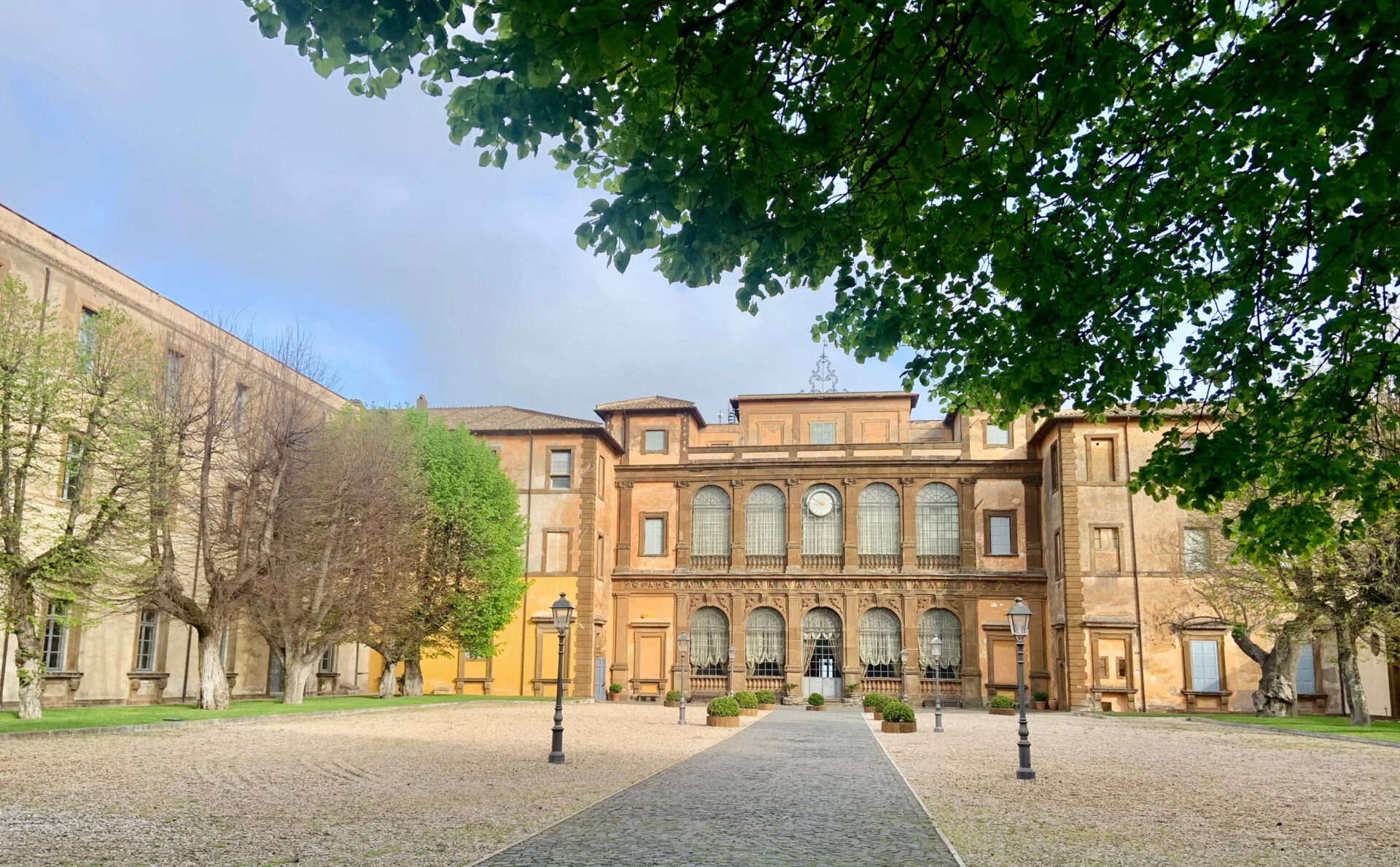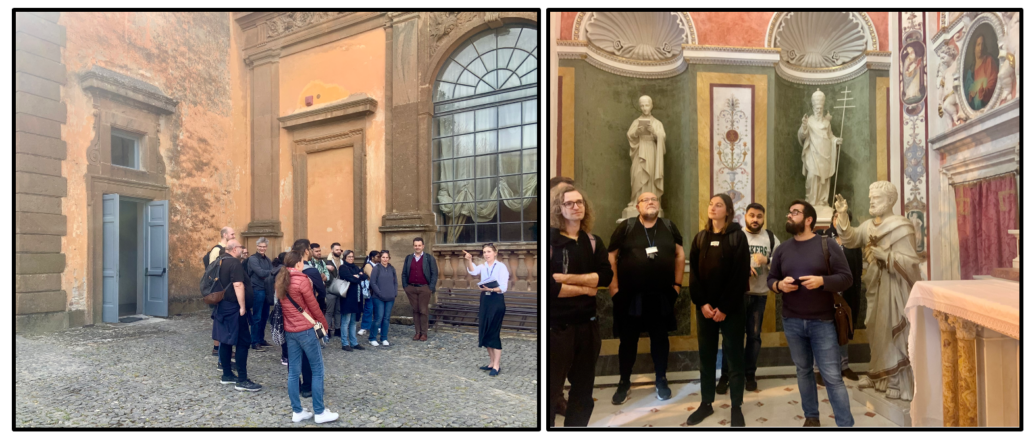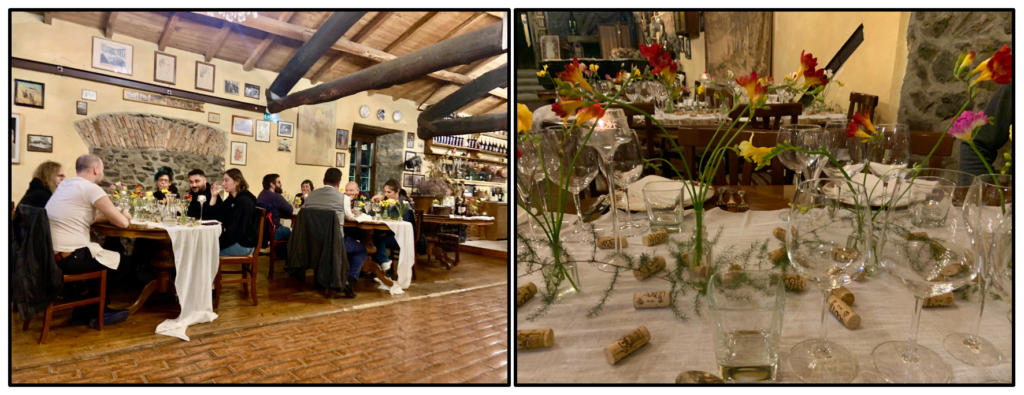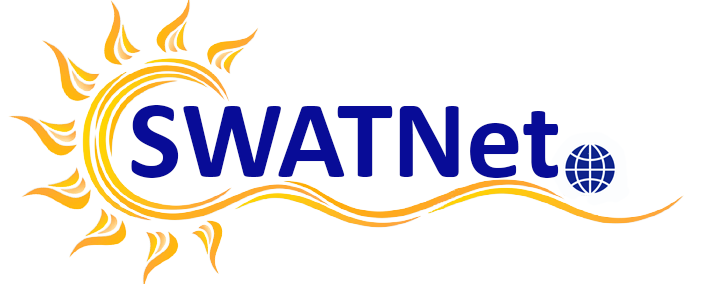
Third Year of SWATNet
Emilia Kilpua
The third year of SWATNet has passed, and to summarise its achievements and build the roadmap to the project’s final year, the Annual meeting was organised, followed by the final training event of SWATNet – Workshop 7.
These activities were organized 8-11 April 2024 by the University of Rome Tor Vergata in the city of Frascati. It is a small town a few tens of kilometres from Rome, surrounded by green hills, old villas and wineries. We were all amazed when entering the conference place through an ancient gate guarded by dragon statues and surrounded by a lush forest.
The impressive Villa Mondragone (the name means a ‘Mountain of a Dragon’) was purchased in early 1980s by the University of Tor Vergata and it was a luxurious place to host the SWATNet activities. At the end of the Annual Meeting on Tuesday we had a tour of the villa. The place was constructed starting in the late 16th century on the remains of an ancient Roman settlement. Pope Gregory XIII used Mondragone as his summer residence and the shift to the Gregorian calendar was initiated there.
The meeting started at noon on Monday with the updates and discussions on the management, outreach and training. The third year had also passed successfully with following highlights
- All ESRs have completed the Observatory training at Gyula Bay Zoltán Solar Observatory
- Academic secondments have been completed for all except one ESR
- Industrial trainings started and some of them already completed
- Several scientific papers have now published or submitted, almost each ESR now prepared articles with them as main authors.
- ESRs participated to many scientific conferences and interacted with each other and wider scientific community
- Several outreach activities occurred, including European Researcher’s Night, Topical Discussion at the European Space Weather Week, From Solar Future to Future Society, and finishing phase A and moving to phase B in Horizon Results Booster.
Monday evening we took a shuttle up on a hill near Frascati downtown and had a delicious dinner at the charming Cantine Santa Benedetta where the staff served us their own wines and local food.


Research progress
The highlight of the Annual Meeting was a scientific seminar on the second day where each SWATNet student presented the results of their research work. In previous meetings only a few minutes summaries were made but now the talks were 15 minutes and plenty of time reserved for discussion. Progress of scientific work is also summarized in SWATNet Newsletter 3.
The first Work Package of SWATNet (WP1) focuses on modeling and forecasting of solar activity, including solar flares, coronal mass ejections (CMEs) and eleven-year solar cycles. Augustin and Shreeyesh had studied proxies for solar flares. This is crucial for space weather as flares produce enhanced electromagnetic radiation and energetic particles that arrive to Earth only from eight to tens of minutes. Augustin has found out that the evolution of cumulative coronal intensity close to the flare region is significantly different for eruptive active regions and those that do not produce flares. Shreeyesh showed that a parameter based on extrapolation of magnetic fields from the solar surface higher up in the solar atmosphere jumps before the largest flares and could give a warning even 24 hours before a flare happens. Shifana has estimated the magnetic field magnitude in a CME using helicity budget and white-light coronagraph reconstructions, and studied the evolution of the magnetic field in interplanetary space. The event she studied was a line-up of Solar Orbiter about half away between the Sun and the Earth and the near-Earth spacecraft. Finally, Guilherme showed his results for improving predictions of longer term solar activity using a flux transport model.
Work Package 2 (WP2) focuses on the modeling of the corona, solar eruptions and solar energetic particles. The corona is investigated by Mayank. He has applied a numerical simulation to show that collisions between ions and neutrals heat the chromosphere and lead to plasma outflows. During the past year, Andreas updated his flux rope tracking method to use mathematical morphology algorithms, and developed a Graphical User Interface for the tool. Using these methods he has investigated instabilities that are behind solar eruptions. Lidiya and Edin both investigate solar energetic particles. Lidiya has compared particle energisation using adiabatically focused (i.e. diverging magnetic field causes particle velocities to increase along the magnetic field) and non-focused Monte-Carlo simulations. The results show that the non-focused model leads to strong acceleration while in the focused model particles cool adiabatically and escape from the shock. Edin in turn has investigated particle acceleration by solar wind stream interaction regions and double CMEs using coupled heliospheric model and particle acceleration code. He is also investigating acceleration in the coronal model by injecting particles to the leg and front of the CME. In the last project of WP2 Ronish has build a catalog of those CME and ICME pairs that caused a space weather storm on Earth, and using this catalog shown that a drag based model has a good agreement with the observations.
The Third Work Package of SWATNet (WP3) focuses on forecasting space weather using artificial intelligence (AI) tools. Grégoire and Simone have estimated the performance of deep-learning and machine learning approaches in forecasting solar flares. They have provided several suggestions for improving the methods and shown that the applied evaluation metrics significantly affects the assessment of the model performance. Last but not least, Slava developed a Mathematical Morphology algorithm to identify sunspots and analyse their morphology and now she works on the extraction of coronal off-limb structures. Her results demonstrate that high and low 304 Å intensity structures show different solar cycle behaviour and there are clear active latitudes located about 20 degrees from the equator as well as active longitudes separated by about 180 degrees.
Our External Advisory Board was happy to see such a big of progress in ESR’s work and that they now had more time to describe their scientific work in the meeting. They also congratulated students on clear presentations and hard work that they had seemingly placed on their research.
Concluding thoughts
We enter the last year of SWATNet. Students will complete their industrial training, do more research and write more papers. Some of them will have their defences and continue as postdoctoral researchers or in other careers. Some will spend one more year more as doctoral researchers at their host universities funded by other projects.
Next year we will organise the Final Conference of SWATNet that will be open for the whole scientific community. Together with the meeting we will organise SWATNet Open Day where we will focus on disseminating educational aspects, best practices and lessons learned during this network.

